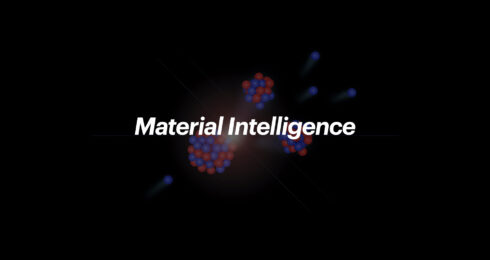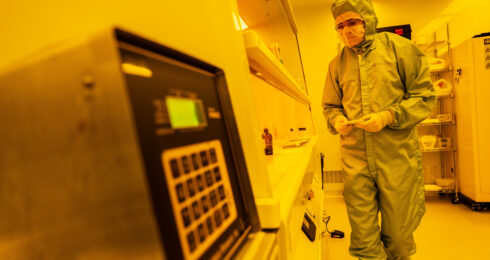Superconductivity is an essential ingredient in many existing and future technologies. Topological superconductors in particular offer great promise in fault-tolerant quantum computing. But the existing materials are sensitive and expensive to study.
Now physicists at the University of British Columbia have proposed a path to creating the first high-temperature topological superconductor, offering an accessible method to expand their utility in research and industry.
Marcel Franz and colleagues predict this week in Nature Physics that combining two monolayer-thin sheets of copper-based materials (such as Bi2Sr2CaCu2O8+δ) in a twisted configuration (pictured above) will lead to topological superconductivity at much higher temperatures than researchers have achieved so far.
“For the past few years, researchers have been interested in twisted structures in advanced materials, starting with graphene,” said Franz, a professor with the Stewart Blusson Quantum Matter Institute and department of Physics and Astronomy at UBC. “Some very interesting properties occur when you take two graphene monolayers and assemble them into bilayer structures with a slight—but precise—twist.”
Graphene is a sheet of carbon atoms and a highly effective conductor. Franz and colleagues predict that their copper-based material will offer more flexibility in its assembly because, among other things, the twist angle doesn’t require such precision. “Our modeling indicates this material will become a topological superconductor when the layers are combined at an angle that is close to 45 degrees, meaning 45 degrees plus or minus ten degrees. You can do it by sight, almost. This material should be easier to assemble than graphene.”
The material isn’t theoretical—the ingredients already exist. A monolayer-thin high-temperature cuprate superconductor Bi2Sr2CaCu2O8+δ was demonstrated in a paper published in Nature in 2019.
Superconductivity is a quantum state of matter that occurs at very cold temperatures. The state enables frictionless motion of electrons, meaning that electrical current does not lose energy in the form of heat and can persist indefinitely. Topological superconductors are a special class of superconductor with interesting and unusual properties, making them appealing candidates for use in applications such as quantum computers. While quantum computing shows promise for tackling problems that are challenging to solve using classical computers, current models are highly sensitive to disturbances. Because of the way that particles in topological superconductors behave, they are particularly robust and not as sensitive to disturbances from heat, vibration or noise.
In order to achieve topological superconductivity the candidate materials must be kept very cold, which requires expensive equipment inaccessible to all but the most highly specialized laboratories. By contrast, the model that Franz and colleagues proposed offers the benefits of topological superconductivity at much higher temperatures—possibly as high as 90 Kelvin—which means they can be cooled using liquid nitrogen, which can be purchased online for about the same price per litre as a jug of milk.
“Research at SBQMI seeks to unravel and exploit the complex phenomena that emerge in novel engineered materials, including topological states,” said Andrea Damascelli, Scientific Director at SBQMI. “This new work represents an important milestone in SBQMI’s Quantum Materials by Design overarching mission, to rationally design, synthesize, and study quantum materials with the ideal properties to serve as building blocks for future ultra-high-performance technologies.”


